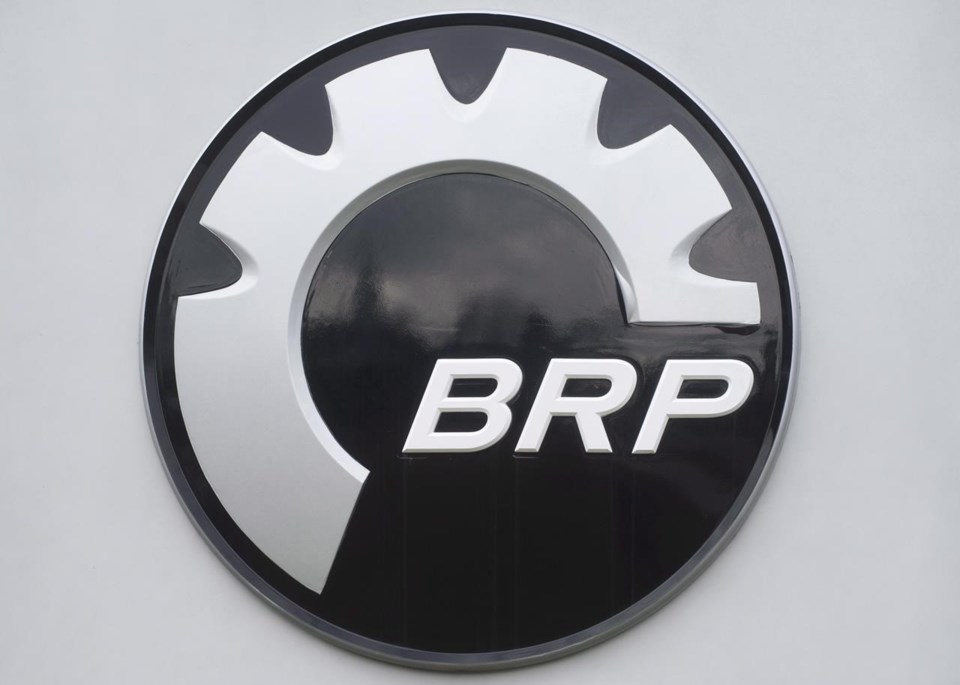MONTREAL — BRP Inc. chief executive José Boisjoli says a sputtering economy has failed to put the brakes on the powersport company, with enough wealthy North Americans to buoy sales through the rest of the year.
"In the United States, 35 per cent of the population earns above $100,000, and 70 per cent of our customers earn above $100,000. The richer people are interested in buying our product line," the 20-year CEO said in a phone interview.
"And when we look at the big picture, I totally understand analysts or investors or even people who are concerned about the macroeconomic — but we don't see it."
Two decades after it spun off from Bombardier Inc., BRP has seen its size and financial charts trend steadily upwards. The head count has ballooned to 23,000 from 6,800 in 2013. Revenues rose 245 per cent to $10 billion between its fiscal 2013 and 2023 (which ended Jan. 31). Its claimed share of the powersport market stands at more than one third, versus 18 per cent 10 years ago.
The pandemic prompted a brief lull, but then propelled demand for powersport vehicles across the globe as consumers sought to rip and roam outdoors.
In its latest quarter, strong Sea-Doo and off-road vehicle sales drove up total profits by 28 per cent year over year, beating analyst expectations. Even with COVID-19 in the rear-view mirror, the Ski-Doo maker ramped up revenues by more than a third to $2.43 billion in the three months ended April 30 compared with a year earlier.
On a call with analysts Thursday, Boisjoli said the company outpaced the North American powersports industry, where sales dipped, thanks to consumer demand that was dented but not broken by inflation and higher interest rates.
"The consumer would pay eight per cent more (year over year) on a monthly payment. That factors in inflation, interest rates, etc. So yes, it's higher. But on the other side, now we are offering promotions that's certainly helping to drive retail," he said.
The bigger price tags are not a "significant" deterrent for buyers, Boisjoli added, but do allow BRP to cover higher costs.
"Finally we're getting ahead of inflation. So all the pricing action we took over the last several years is now more than offsetting the inflation."
The CEO said he still expects to see market share gains — particularly with all-terrain vehicles — fuelled partly by new products despite a "flat industry this year."
Sea-Doo sales were up by about a third from last year, while side-by-side vehicle and three-wheeled motorcycle sales also increased, the company said.
Boisjoli reiterated the BRP's outlook for the fiscal year, which forecasts a revenue rise of between nine per cent and 12 per cent — $10.9 billion to $11.3 billion — driven by off-road vehicle sales. BRP predicted normalized earnings per diluted share of between $12.25 and $12.75 — a jump of between two per cent and six per cent, according to Stifel GMP analyst Martin Landry.
"North American industry retail sales had a slow start this year with unfavourable weather but appear to have accelerated recently," he said in a note to investors. BRP's retail sales rose by a quarter in April and 50 per cent in May relative to those months in 2022.
"Additional demand indicators also appear healthy with stronger than expected early bookings for snowmobiles and a sustained level of new customers entering the industry," Landry said.
However, BRP lowered its guidance for the marine segment due to supply issues that lowered availability and decreased retail boat sales by 39 per cent year over year. A late spring in the Great Lakes region — a key market for the division — also dragged down sales of aluminum fishing boats and leisure pontoon boats by roughly one third and one half, respectively.
Boisjoli said in the interview he still expects to roll out the company's first electric snowmobiles to select outfitters in December, and to launch electric motorcycles and a new electric hydrofoil board — the Sea-Doo Rise — in the summer of 2024. The models are part of a $300-million push to offer electric versions of all its product types by 2026.
On Thursday, the company reported a first-quarter profit of $154.5 million, up from $121.0 million in the same quarter last year.
Profits amounted to $1.92 per diluted share for the quarter ended April 30, up from $1.46 per diluted share a year earlier.
Revenue totalled $2.43 billion, up from $1.81 billion in the same quarter last year, said the company, whose roots date back to 1942 with the founding of Bombardier.
Normalized earnings amounted to a profit of $2.38 per diluted share, up from a normalized profit of $1.66 per diluted share a year ago — and nudging past analyst expectations of $2.34 per share, based on estimates compiled by financial markets data firm Refinitiv.
This report by The Canadian Press was first published June 1, 2023.
Companies in this story: (TSX:DOO, TSX:BBD.B)
Christopher Reynolds, The Canadian Press


